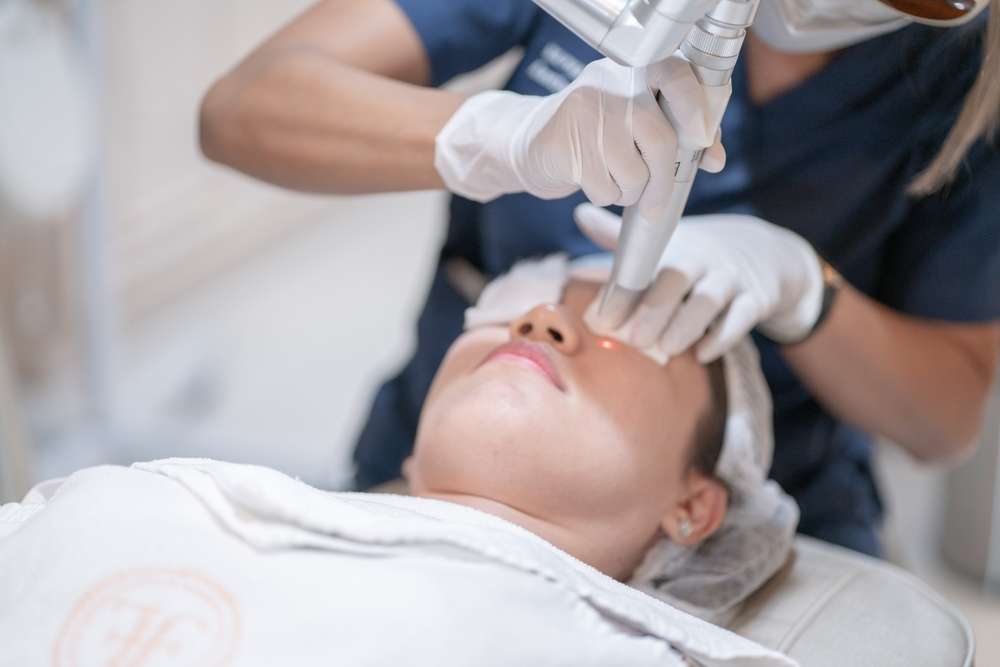Laser Skin Rejuvenation: A Complete Modern Guide for Skin
Explore how laser skin treatment delivers targeted, non-invasive skin rejuvenation for concerns like wrinkles, sun damage, scarring, uneven tone and unwanted hair. This comprehensive guide explains common laser types, what to expect during a session, recovery timelines, pricing ranges, and how to choose a qualified clinic for safer, more effective results.

Laser procedures are among the most advanced tools in contemporary aesthetic care for improving skin appearance. By directing concentrated light energy into specific layers of the skin, lasers can stimulate collagen, resurface texture, and treat pigment or vascular issues. Below is a practical overview of what lasers can treat, how treatments proceed, recovery expectations, cost ranges, and tips for selecting a reputable clinic.
Which Skin Problems Can Lasers Treat?
Modern laser systems are versatile and can address a wide variety of cosmetic concerns. Common targets include:
- Fine lines and facial wrinkles
- Sun-induced pigmentation and age spots
- Acne scars and other types of scarring
- Uneven skin tone and rough texture
- Enlarged pores
- Vascular lesions such as broken capillaries
- Unwanted hair removal
Different lasers are tuned for different concerns—some focus on pigmentation, others on collagen stimulation, and some penetrate deeper to treat blood vessels or hair follicles. A tailored approach usually yields the best outcome.
What Happens During a Laser Appointment?
A typical visit starts with a detailed skin assessment from a licensed practitioner who will review your medical history, skin type, and treatment goals. The actual treatment commonly lasts between 30 and 60 minutes, though smaller or larger areas will affect that time.
Patients often describe the sensation as warmth, prickling, or a mild snapping feeling as pulses of light are delivered. Many clinics apply a topical anesthetic to numb the area beforehand and improve comfort. Protective eyewear is used to shield eyes from the laser beam.
Aftercare instructions will be reviewed prior to leaving the clinic; these usually include gentle cleansing, sun avoidance, and recommended topical products to support healing.
Recovery Timeline and Expected Results
Recovery depends on the laser type and intensity. Gentle, non-ablative lasers typically cause minimal downtime and only brief redness, while aggressive resurfacing lasers produce more significant swelling and peeling and require a longer recovery.
Typical post-treatment effects include:
- Mild redness that may persist for 24–72 hours
- Some swelling that generally resolves in a few days
- Flaking or peeling after deeper resurfacing
- Short-term sensitivity to sunlight
Initial improvements can appear within 1–2 weeks, particularly for texture and pigmentation changes. Collagen remodeling continues over weeks to months, and many patients see progressive improvement after multiple sessions. Providers often recommend a series of treatments spaced several weeks apart to achieve optimal and lasting results.
How to Choose the Right Clinic and Provider
Selecting an experienced clinic is critical for safety and effectiveness. When evaluating providers, consider the following:
- Board certification or licensure of the treating practitioner
- A modern facility with well-maintained equipment
- Demonstrated experience with the specific laser you need
- Before-and-after photos from prior patients with similar concerns
- Transparent discussion of potential risks, realistic outcomes, and costs
- Clear pre- and post-treatment care instructions
Ask questions about the provider’s training, complication rates, and follow-up care policies. A reputable clinic will provide honest guidance and customize a plan to your skin type and goals.
| Treatment Type | Average Cost Range | Number of Sessions Needed |
|---|---|---|
| Fractional Laser | $1,000 - $2,500 | 3-5 sessions |
| IPL Treatment | $400 - $800 | 4-6 sessions |
| CO2 Laser | $2,000 - $4,000 | 1-2 sessions |
| Nd:YAG Laser | $300 - $600 | 4-6 sessions |
Prices, rates, or cost estimates mentioned in this article are based on the latest available information but may change over time. Independent research is advised before making financial decisions.
Matching Laser Type to Your Needs
- Fractional lasers: Often used to improve texture, reduce scarring, and stimulate collagen with controlled micro-injury.
- IPL (intense pulsed light): A non-laser light therapy that treats pigmentation, redness, and sun damage; best for surface-level issues.
- CO2 lasers: Ablative resurfacing that removes outer skin layers for dramatic improvement in deep lines and scars, with longer recovery.
- Nd:YAG lasers: Penetrate deeper, useful for vascular lesions, certain pigmentation concerns, and laser hair removal depending on settings.
Your practitioner should recommend the device and settings that balance efficacy and downtime for your skin type.
Maximizing and Maintaining Results
Long-term benefits come from realistic expectations, following aftercare instructions, and combining treatments when appropriate. A consistent daily skincare routine—sun protection, topical antioxidants, and moisturizers—helps prolong results. Periodic maintenance sessions are often recommended to sustain improvements.
Laser therapy has evolved rapidly, providing targeted, effective options for many common skin complaints. Outcomes vary by individual, so a careful consultation, clear communication with a qualified provider, and adherence to pre- and post-care are essential to achieving desired results.
This article is for informational purposes only and should not be considered medical advice. Please consult a qualified healthcare professional for personalized guidance and treatment.






